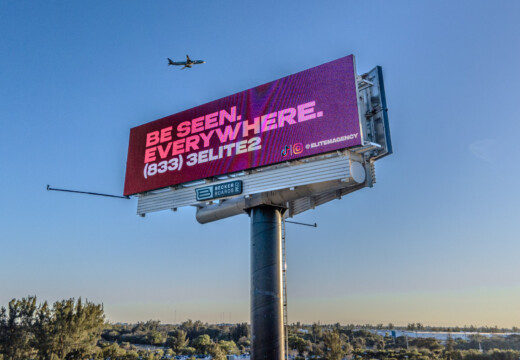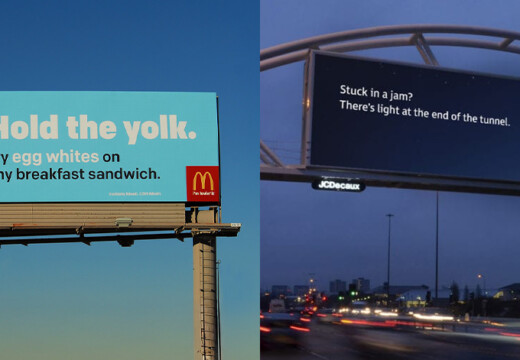Demographic mapping helps businesses place billboards where they’ll reach the right audience. By combining data like population, income, and traffic patterns, advertisers can target specific groups, save money, and improve results. Here’s a quick breakdown:
- What Is It?: Using data (like census, mobile, and traffic) to find the best billboard spots.
- Why It’s Useful:
- Targets the right audience.
- Saves money by focusing on high-impact locations.
- Tracks performance and boosts ROI.
- Key Tools: GIS software, mobile data, and traffic analysis.
Platforms like Blip simplify this process with tools for location selection, real-time analytics, and flexible pricing. With advancements like AI and automated tools, billboard advertising is becoming smarter and more precise.
Using DemographicsNow – Advanced Mapping for Demographics Analysis

Data Sources for Billboard Planning
Effective billboard placement relies on three key data sources that provide insights into audience behavior and support informed decision-making.
U.S. Census Data
The U.S. Census Bureau offers extensive demographic data, updated every ten years and supplemented by annual ACS estimates. This information includes:
| Demographic Factor | Available Data Points |
|---|---|
| Population Density | Residents per square mile |
| Income Levels | Median household income by zip code |
| Age Distribution | Population breakdown by age groups |
| Household Size | Average number of people per household |
| Education Level | Percentage of college graduates |
When paired with GIS tools, census data helps identify areas with high concentrations of target demographics. This makes it easier to choose billboard locations that align with specific campaign goals.
Mobile Device Data
Mobile device data tracks real-world movement patterns, offering insights into audience behaviors. This data provides real-time metrics such as audience counts, dwell times, and travel patterns, helping advertisers identify peak exposure times. For example, Blip’s digital billboard network uses mobile analytics to fine-tune campaign timing and location strategies.
When combined with census and traffic data, mobile insights add another layer of precision to billboard planning.
Traffic Pattern Analysis
Traffic data is crucial for understanding how and when people move through specific areas. Important metrics include:
| Traffic Metric | Why It Matters |
|---|---|
| Daily Vehicle Count | Indicates potential audience reach |
| Peak Hours | Identifies the best display times |
| Speed Limits | Affects message length and complexity |
| Direction of Travel | Impacts visibility and positioning |
The Department of Transportation (DOT) provides standardized traffic count data, which, when combined with mobile device insights, offers a detailed view of movement patterns. This integration ensures billboard placement and timing are optimized for maximum impact.
Using Demographics to Plan Campaigns
Mapping Tools and GIS Software
GIS software turns demographic data into actionable insights, helping you pinpoint the best spots for billboards. Tools like ArcGIS and QGIS allow you to layer different data sources – like census stats, traffic patterns, and mobile data – to visualize where your target audience is most concentrated.
| Tool Type | Primary Use | Key Benefits |
|---|---|---|
| GIS Software | Demographic overlay mapping | Combines census, traffic, and mobile data |
| Heat Mapping | Population density visuals | Pinpoints high-value audience clusters |
| Route Analysis | Traffic flow patterns | Maximizes commuter visibility for billboards |
Building Audience Profiles
To craft detailed audience profiles, mix demographic data with real-world behavior. The best profiles combine static data (e.g., census) with dynamic trends (e.g., movement patterns) to give a fuller picture of your potential viewers.
Here are some demographic factors to focus on:
| Factor | Relevance to Billboard Planning |
|---|---|
| Income Level | Indicates purchasing power and product alignment |
| Age Distribution | Shapes message design and product appeal |
| Commute Patterns | Guides display timing and location for visibility |
| Lifestyle Choices | Helps tailor messaging and brand positioning |
Armed with these profiles, you can choose billboard placements that truly match your audience.
Choosing Billboard Locations
Picking the right location is all about balancing audience demographics with practical visibility. Platforms like Blip make this easier by offering data-driven tools that factor in multiple considerations at once.
"Billboards are one of the most impactful ways to advertise, and with Blip, you spend a fraction of what you would end up paying elsewhere." – Ray Bowens, Founder, Hashtag-Vape
When evaluating locations, keep these factors in mind:
| Consideration | Impact on Campaign Success |
|---|---|
| Traffic Speed | Affects message readability and complexity |
| Viewing Distance | Determines design elements like text size |
| Surrounding Setting | Impacts visibility and contrast against the backdrop |
| Demographic Match | Ensures your message connects with the right audience |
sbb-itb-2e2e93f
Blip Platform Features for Demographics

Blip takes demographic mapping to the next level, offering tools designed for smarter, data-driven billboard campaigns.
Blip Location Selection Tools
Blip simplifies billboard selection by combining demographic and traffic data on an interactive map. This allows users to evaluate daily impressions, CPM rates, and other key metrics to align billboard locations with their target audience.
| Feature | Benefit for Demographics |
|---|---|
| Interactive Map | Displays population density and traffic patterns visually |
| Performance Metrics | Offers real-time data on audience reach and engagement |
| Location Filters | Helps target specific demographic clusters by area |
| Impression Data | Shows potential audience exposure for each location |
Pay-Per-Play Pricing Model
Blip’s pricing model is designed for flexibility, making it easier to target specific demographics without requiring a large upfront investment. Starting at just $20 per day, advertisers can test various locations and audience segments while staying within budget.
The platform’s real-time bidding system updates every 10 minutes, giving advertisers the ability to:
- Adjust spending based on demographic performance.
- Expand campaigns in areas with strong results.
- Pause or tweak campaigns in underperforming locations.
- Allocate budgets more effectively across different segments.
Performance Tracking Tools
Blip’s analytics dashboard provides detailed insights into campaign performance by demographic. These tools help advertisers fine-tune their strategies and maximize impact.
| Metric Type | Tracking Capability |
|---|---|
| Daily Analytics | Tracks performance trends for specific locations |
| Budget Analysis | Evaluates spending efficiency for each demographic segment |
| Schedule Impact | Measures engagement based on time of day |
| Location ROI | Compares results across different areas |
Small business owner Kimberly Pinkson of Pretty In Pinkston shared her experience with Blip’s tools:
"Blip works for us. It’s a different medium, and it brings a lot of exposure. It sets us apart from the rest of the [competition], and that’s what I like."
To ensure campaigns are launched quickly and meet quality standards, Blip uses a two-step moderation process:
- Blip review: Completed in about 90 minutes.
- Billboard owner approval: Takes 1-3 days.
These features not only enhance current campaigns but also set the stage for future advancements in demographic-focused advertising.
What’s Next in Billboard Demographics
Advertisers are using advanced tools to tap into detailed demographic data, and emerging tech is pushing the boundaries of campaign accuracy even further.
AI in Audience Analysis
AI is reshaping how billboard campaigns analyze their audiences. By processing mobile data and traffic patterns, AI creates detailed audience profiles that help advertisers make smarter decisions.
Here are some advancements in AI-driven demographic analysis:
| Technology | Application | Impact |
|---|---|---|
| Machine Learning | Predicts audience movement patterns | Helps choose better billboard locations |
| Computer Vision | Tracks traffic flow and pedestrian counts | Offers real-time insights on demographics |
| Predictive Analytics | Forecasts campaign performance | Supports smarter budgeting decisions |
These AI tools are laying the groundwork for automated systems to make digital out-of-home (DOOH) advertising even easier to manage.
Automated DOOH Advertising
DOOH advertising is evolving with automation, making it simpler and more effective to target specific demographics. Platforms like Blip are leading the way by offering user-friendly tools combined with advanced targeting features. Advertisers now have the ability to:
- Track campaign performance live with analytics
- Adjust targeting based on demographic feedback
- Manage budgets flexibly with pay-per-play models
- Quickly launch campaigns through streamlined approvals
These modern platforms make it easier than ever to fine-tune campaigns and manage spending effectively.
Data Privacy Guidelines
As targeting becomes more precise, protecting user data remains a critical focus. The industry is working on stricter standards to ensure responsible data handling. Key strategies include:
| Privacy Consideration | Implementation Strategy |
|---|---|
| Data Anonymization | Use group-level data instead of personal details |
| Consent Management | Be transparent about how data is collected and used |
| Storage Security | Encrypt all stored demographic data |
| Access Controls | Restrict data access to only those who need it |
"It’s not a social media thing that you see on your phone. It’s not word-of-mouth. It’s big and bold and out there in public. I would say this is the first step of looking big and public"
Summary
Demographic mapping has turned billboard advertising into a precise, data-driven approach, improving both placement decisions and campaign results.
Key advancements in demographic mapping:
| Aspect | Impact on Billboard Advertising |
|---|---|
| Data Integration | Combines census data, mobile insights, and traffic patterns for accurate targeting. |
| AI Technology | Supports predictive analysis and real-time audience tracking. |
| Privacy Standards | Balances effective targeting with responsible data handling. |
Platforms like Blip leverage these advancements, offering easy-to-use tools that combine detailed targeting with accessible advertising options.
As demographic mapping continues to evolve, it enhances targeting accuracy and introduces automated strategies for billboard campaigns. This progression ensures billboard advertising remains a highly effective marketing tool, offering both broad visibility and precise audience engagement.


